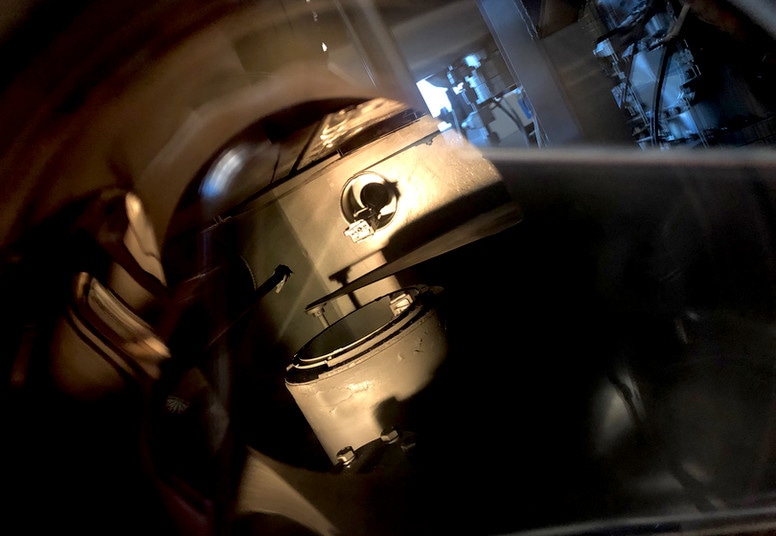Jul 11 2019
New materials are important for several things, including efficient energy conversion for eco-friendly engines of the future. In the past and even today, chance plays a considerable role in the finding of new materials, according to Professor Alfred Ludwig, Chair of Materials Discovery and Interfaces at Ruhr-Universität Bochum (RUB).
 By depositing simultaneously atoms from three or more directions on a substrate, the researchers produce so-called thin-film materials libraries. (Image credit: © RUB, Driessen)
By depositing simultaneously atoms from three or more directions on a substrate, the researchers produce so-called thin-film materials libraries. (Image credit: © RUB, Driessen)
Professor Ludwig explains how the process of materials discovery could be fast-tracked by integrating combinatorial materials science with computational techniques in an outlook article in the journal NPJ Computational Materials (July 10th, 2019).
An unexplored cosmos of potential materials
The number of possible new materials that can be made from elements in the periodic table is huge—even if scientists were to restrict themselves to the 40 to 50 elements that are non-toxic, eco-friendly, and available on Earth in adequate quantities. These prospects remain as yet for the most part unknown.
New techniques of manufacturing such materials pave the way for new possibilities for a more efficient method.
By depositing simultaneously atoms from three or more directions on a substrate, we produce so-called thin-film materials libraries.
Alfred Ludwig, Professor and Chair of Materials Discovery and Interfaces, RUB
High-throughput screening
So as to render those libraries functional, they not only must be produced in high-throughput processes, but efficient techniques must be implemented to examine the properties of the materials. This is the only means to discover if the library holds any material composition that offers properties that are stimulating for a probable application. “In order to accelerate the entire process of discovering new materials, both the measurements and the analysis should ideally be automated,” explains Ludwig.
He hopes the use of a database to become at least partly automated, so as to keep control over the expected massive volumes of material data. “It is moreover important for these data to be compatible for the use by research groups from different disciplines,” as he highlights. Documentation should be done for the data of element compositions that look particularly promising, as well as for all others.
The purpose of this approach is to facilitate machine learning and to enable artificial intelligence to aid the search for new materials.
Alfred Ludwig, Professor and Chair of Materials Discovery and Interfaces, RUB